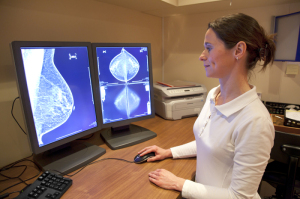by
Thomas Dworetzky, Contributing Reporter | October 14, 2016
A new study that questions the value of widespread use of mammography for cancer screening has itself been called into question by cancer and radiology experts.
The study, reported in the
New England Journal of Medicine, concluded, “women were more likely to have breast cancer that was overdiagnosed than to have earlier detection of a tumor that was destined to become large.”
In other words, screening catches small relatively benign breast tumors more often than life-threatening cancerous ones.



Ad Statistics
Times Displayed: 78272
Times Visited: 2779 Ampronix, a Top Master Distributor for Sony Medical, provides Sales, Service & Exchanges for Sony Surgical Displays, Printers, & More. Rely on Us for Expert Support Tailored to Your Needs. Email info@ampronix.com or Call 949-273-8000 for Premier Pricing.
The study examined U.S. government cancer statistics in the SEER database, covering women's health from 1975 to 2012, to measure the effectiveness of screening since it became widely adopted in the 1980s.
The study's authors, led by Dartmouth Institute of Health Policy and Clinical Practice's Dr. H. Gilbert Welch, concluded that “the reduction in breast cancer mortality after the implementation of screening mammography was predominantly the result of improved systemic therapy.”
Not so fast, objected a number of leading cancer and radiology experts.
The Welch data “do not support the authors’ conclusion that improved therapy is more key to breast cancer survival than mammography screening. Nor does the data support that mammography use leads to rampant overdiagnosis,” according to a release issued by the American College of Radiology (ACR), adding that “the baseline assumption on which the conclusions are based is contradicted by the primary author’s previous papers and well-established research.”
Large tumor occurrence in U.S. women has gone down 30 percent since commonplace screening, according to the SEER database used in the study – but the drop, said the ACR, “is related to the documented increase in the detection of small, invasive cancers.”
It added, “not surprisingly, the same SEER database shows that since mammography screening proliferated in the mid-1980s, the U.S. breast cancer death rate, unchanged for the previous 50 years, has dropped nearly 37 percent. This is in keeping with large studies (Otto et al. and Coldman et al.) that have shown that in women who get regular mammograms, the risk of dying from breast cancer is cut nearly in half.”
Then there is the baseline assumption that invasive breast cancer rates have held stable through the years.
“This differs from a previous paper by Welch which claimed the incidence growth rate to be .25 percent annually. Both claims are unsupported. Accounting for the real underlying incidence of invasive breast cancer is important, as shown by Puliti et al., and based on actual patient data is just over 1 percent per year from 1940 to the start of the SEER program in 1974. Had the authors used the actual 1 percent breast cancer incidence growth rate, the findings would have been vastly different — showing no evidence of overdiagnosis and a marked decline in advanced cancers, which has led the decline in breast cancer death since screening began.”

